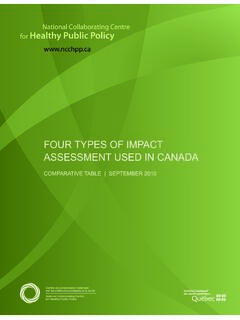Transcription of Customer Risk Assessment 0908 - Prime Associates
1 METAVANTE WHITE PAPER Customer Risk Assessment Christopher Price Metavante Compliance Consultant Customer Risk Assessment 1 2008 Metavante Corporation. All rights reserved worldwide. Introduction In the past four years, much attention has been focused on Section 352 of the USA PATRIOT Act the ability to monitor client activity to detect suspicious activity. Anti-money laundering (AML) monitoring technologies have proliferated throughout the world-wide compliance landscape, and any financial institution (FI) that is in need of AML detection technology can speak to many vendors in that arena.
2 More recently, a growing area of focus, especially in the United States, is on Section 326, which outlines Know Your Customer (KYC) and Customer Identification Program (CIP) requirements for an FI. These represent some of the most basic tenets of the USA PATRIOT Act, because of their importance to a sound compliance program. With the focus shifting to CIP/KYC, FIs are rethinking their client relationships and their client acceptance process. Firms that have given this problem the attention it deserves typically attack the problem from multiple angles.
3 The first area is risk Assessment . How do you actually risk-assess your existing client base and any new prospective clients? For most FIs this is an area that was never fully addressed and presents tremendous challenges. No longer can you simply establish risk categories that have little or no quantitative merit. Risk Assessment is a science that requires real analytics and significant processes behind it. Secondly, the process known as Customer acceptance, or the ability to determine based on client type what the firm expects to know about any new prospect, is a key factor in KYC programs.
4 Because there may exist a multitude of client types, especially in FIs that offer a rich set of products and services, Customer acceptance processes must be segmented and detailed for each client type. The issue of Customer identity, or truly knowing the Customer , is the basic foundation on which Section 326 is built. Identity verification techniques and Customer assessments against criminal, global sanctions, and politically exposed person (PEP) databases are linchpins in this requirement. This white paper is intended to give the reader an overview of the Customer risk Assessment process, and it includes examples and an illustration.
5 BSA/AML Risk Assessment Role in Validating the Customer Risk Assessment Banks and other FIs are encouraged by the federal functional regulators to conduct annual risk assessments of the institutional exposure to potential money laundering and terrorist financing. For a look at the regulatory requirements surrounding a BSA/AML Risk Assessment , please select the following link: The BSA/AML Risk Assessment serves as the road map for guiding the AML Risk Management team in the implementation of procedures and internal controls for comprehensive KYC/CIP, recordkeeping, and suspicious activity monitoring and reporting.
6 The BSA/AML Risk Assessment considers the following: 1. Geography including the FI s jurisdiction, branches, the geographic regions of the Customer base, and the jurisdiction of counterparties 2. Customers defining Customer types, with particular concern for the identification of Customer /entity types conventionally associated with a heightened risk for money laundering/terrorist financing exposure, such as cash-intensive businesses, import/export companies, and PEPs 3. Products and services offered by the institution certain products and services pose a greater risk of money laundering and terrorist financing, such as private banking, international wire transfers, and trade finance Customer Risk Assessment 2 2008 Metavante Corporation.
7 All rights reserved worldwide. The BSA/AML Risk Assessment allows the institution to define Customer types to varying degrees of granularity. For example, Customer types may be defined simply as individuals and businesses. More granular definitions may include individuals, corporations, professional service providers (PSP), non-government organizations (NGO), government organizations, cash-intensive businesses, non-bank financial institutions (NBFI), etc. Having defined and identified Customer types and the various geographies that the institution services respectively, Customer acceptance criteria can be established.
8 This will include basic Customer due diligence, documentary and non-documentary identification, and for customers conventionally associated in the industry as having heightened exposure to potential money laundering risk, enhanced due diligence. Know Your Customer and Customer Acceptance Criteria Availability of KYC Data The BSA/AML Risk Assessment , in identifying areas of exposure, allows AML Risk Management to define the Customer acceptance criteria that will form the basis for the KYC program. It is of no small concern that the KYC data that is subsequently collected and fed into the core banking system be readily available for use in the AML software in which risk modeling is conducted.
9 An institution s AML program may have a very rigorous and robust KYC program, complete with stringent account opening procedures; however, if this data is not readily available, then FIs face the prospect of limited risk factors for consideration in their risk modeling. Initial Risk Rating at Account Opening Stage Before the actual risk rating process takes place, some FIs may apply an initial risk rating to customers, depending upon the policy of the institution. For example, if the risk rating process requires the tabulation of historical transaction activity, this factor will not be available for a new Customer .
10 There are various options available to the FI in such a case. One option is the application of a default risk rating, which automatically flags the new Customer for a probationary period wherein the Customer is subjected to closer scrutiny until a risk rating is applied under the FI s risk model. Another option requires the collection of expected or anticipated transaction volumes/amounts as part of the KYC at account opening. Again, if/when this information is fed to the AML software solution; it can be used in applying an initial risk rating as well as in determining the Customer profile.


